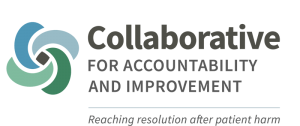Tools and Resources[ Show all or clear results ]
Real life stories, testimonials, events
Institution/Organization/Business
Reference to primary CRP related organization (e.g. CAI website)Web resource/Digital Article
General website that contains CRP related information, may be non-specific or general or mixed resources on a website. Article published on-line. Not available as paper version.Agency for Healthcare Research and Quality (AHRQ)
Reference to primary CRP related organization (e.g. CAI website)
General website that contains CRP related information, may be non-specific or general or mixed resources on a website. Article published on-line. Not available as paper version.
The Agency for Healthcare Research and Quality (AHRQ) is the lead Federal agency charged with improving the safety and quality of America’s health care system. AHRQ develops the knowledge, tools, and data needed to improve the health care system and help Americans, health care professionals, and policymakers make informed health decisions.
Presentation/Webinar
Recorded webinars and presentationsCAI Webinar – Two Sides of the Coin: A Patient/Provider Dyad Explore Diagnostic Error and the Benefits of CRP
Recorded webinars and presentations
Webinar Date: April 15, 2021
Presenters:
- Suz Schrandt, JD, Senior Patient Engagement Advisor, Society to Improve Diagnosis in Medicine; Founder, CEO, & Chief Patient Advocate at ExPPect
- Eric J. Thomas, MD, MPH Associate Dean for Healthcare Quality, McGovern Medical School, University of Texas Health Science Center at Houston; Board President, Collaborative for Accountability and Improvement
Objectives:
- Understand the individual and system factors that can cause diagnostic errors
- Explore the benefits of a CRP response following a diagnostic error
- Examine the consequences of a poor response to a diagnostic error
- Understand the importance of engaging, listening, and learning from patients and families following diagnostic errors
Institution/Organization/Business
Reference to primary CRP related organization (e.g. CAI website)Web resource/Digital Article
General website that contains CRP related information, may be non-specific or general or mixed resources on a website. Article published on-line. Not available as paper version.Institute for Healthcare Improvement (IHI) and the National Patient Safety Foundation (NPSF)
Reference to primary CRP related organization (e.g. CAI website)
General website that contains CRP related information, may be non-specific or general or mixed resources on a website. Article published on-line. Not available as paper version.
The Institute for Healthcare Improvement (IHI) and the National Patient Safety Foundation (NPSF) started collaborating together to utilize its combined resources and knowledge to further patient safety efforts and create safety systems in various healthcare settings.
Meeting/Conference Proceedings
Meeting/Conference ProceedingsNorthwest Communication and Resolution Program Leader Retreat, Sept 2017
Meeting/Conference Proceedings
The Collaborative for Accountability and Improvement and the Foundation for Healthcare Quality hosted a two-day retreat in Seattle, Washington (09/2017) in which administrators and healthcare providers discussed ways to advance communication and resolution programs (CRPs) and other resources in Northwest Hospitals to increase patient safety and communication among hospital leadership, attorneys, and health insurers.
In April 2012, Glenn Clarkson died after a medical error at a rural Kansas hospital. Melissa and Nancy Clarkson describe the three-and-a-half-years of work it took for them to learn what happened in his medical care. Filmed at the Communication and Resolution Program (CRP) Training.
Video
CRP related video, movieThe Story of Michael Skolnik – YouTube Video
CRP related video, movie
The Medstar’s Patient Safety and Quality Program included this video in their patient safety and care program. This video illustrates the story of Michael Skolnik, who lost his life due to medical malpractice. The error involved the surgeon not being completely transparent with the patient or his family about the surgical procedure. This video emphasizes the importance of shared decision making between patients, families, and physicians to avoid future adverse medical outcomes, especially ones in which lives are lost.
